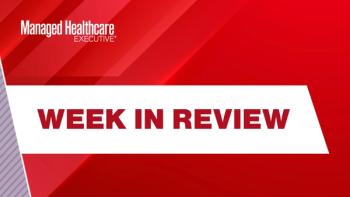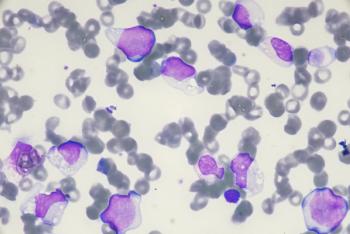
Seven Networking Tips for Health Execs
Executive-level decisions can be complicated. Here’s seven ways to turn to others to gain valuable insight.
“Networking is more than just having a membership in a professional association,” says Susan RoAne, a keynote speaker and best-selling author of How to Work a Room andThe Secrets of Savvy Networking.
“Executive-level decisions are complicated and there’s often no right answer,” says Leslie Snavely, chief digital officer,
Related article:
According to RoAne, who is also recognized by Forbes as one of the top 25 networking experts, knowing and working with colleagues has multiple benefits, including:
- Learning the latest policies, regulations and trends in the industry.
- Establishing relationships with colleagues, constituents and vendors. “Corollary is that when you have a situation or problem you have people who have experienced that issue and can share solutions that worked for them,” RoAne says.
- Gain visibility among colleagues so that you get to hear of-and have access to-new opportunities. (i.e., career management).
“Last, but not least, connect with a network of contacts, colleagues and make friends,” she says. “Healthcare execs are familiar with the research that shows that, over time, people with social relationships/networks are happier, healthier, and live longer-good reasons to me to have a network,” RoAne says.
Gregory Makoul, PhD MS, founder and CEO,
From experts, here are the seven top networking tips for healthcare executives:
1. Attend professional events
“It's important to be very selective about which to attend-I tend to focus on smaller conferences as venues for meeting people who are working hard to solve big problems,” says Makoul.
“Industry tradeshows, conferences, symposiums, and professional organization meetings are a great way to be in front of your target market in volume,” says George Tierney, COO/EVP, product development & marketing at
At association events, Ashok Rai, MD, president and chief executive officer at Prevea Health, a Green Bay, Wisconsin-based healthcare organization that provides primary and specialty healthcare, gains just as much insight from hallway conversations with peers as from structured programming.
“I also find great value in role-based groups, such as the AMGA CEO Leadership Council, as they offer a way to connect with others facing similar issues,” Rai says. “I’m able to share my experience to help others and I takeaway new ideas to implement in my organization. Expanding your view outside your own organization is oftentimes a catalyst for change and improvement.”
RoAne suggests going to every event with a new attitude: “Don’t wonder how you have to meet, move the dial and think ‘I wonder who I get to meet’?”
2. Online networking can lead to real-life help
“Following thought leaders online can broaden your understanding and make you better at your job,” says Snavely. “There are people I’ve connected and interacted with through LinkedIn or Twitter who I’ve later met at conferences or events. Those digital interactions led to real life relationships with people I can turn to when I need help or advice.”
Tierney agrees that combining online networking with face-to-face interaction is crucial. “The more methods you utilize to get in front of people, the more successful you will be,” says Tierney. “Networking is a game of numbers-with so many social media outlets available to you today, networking online is easier than ever and paramount to staying connected with important people in the healthcare industry.”
Related article:
Publishing an article online, whether on LinkedIn or a trade publication, is another angle to online networking. “A LinkedIn article can generate engagement with other experts on the subject, former colleagues, and those simply interested in the topic,” says Grace Emerson Terrell, MD, MMM, FACP, FACPE, chief executive officer, Envision Genomics General Internist,
3. Know how to work a room
“It matters not if you label yourself as shy, introverted, or extroverted,” RoAne says. “What matters is that, in your own way-whatever that way is-you meet, mix and mingle with colleagues, members, clients, and constituents.”
4. Prepare a self-introduction
“There won’t be someone to introduce you around,” RoAne says. “Offer a seven- to nine-second pleasantry; link it to the event at hand to give people a context for why you are there; give people the benefit of what you do rather than a title. By doing so you give them something about which to ask a question, share a thought.”
5. Prepare for conversations then follow-up
“Check organizations’ websites, researching via Google, LinkedIn, or Facebook,” RoAne says. “Read any association journals and local and national newspapers. They have all the information, material, news, and highlights to prepare and familiarize. Then, follow up from a conversation via LinkedIn, association website, Facebook, WhatsApp, or email within three days. Savvy networks stay in touch.”
6. Talk to people standing alone
“It’s easier than getting into a group,” RoAne says. “They just may be shyer than you and would welcome meeting you.”
Snavely shares a similar viewpoint. “When you go to a conference, it’s easy to stick with the group of people you already know,” she says. “But it’s important to push yourself out of your comfort zone and meet new people. Otherwise, you’re missing out on a valuable opportunity to learn from others. If you’re shy, bring a wingman. Keeping a friend close by can give you the confidence to be a bit more outgoing.”
7. Join a collaborative
A collaborative enables executives from different organizations to work together and learn from their peers, according to Jerry Penso, MD, MBA, president and chief executive officer,
Newsletter
Get the latest industry news, event updates, and more from Managed healthcare Executive.





















































